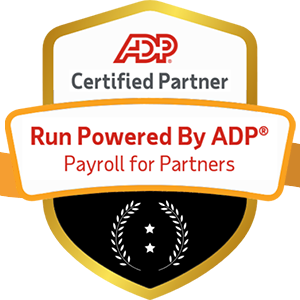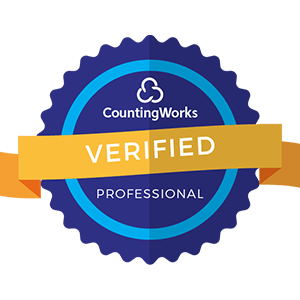
Today’s Human Capital Management professionals do more than onboard new hires and manage employee benefits. They have a seat at the table and through powerful next-generation, Human Capital Management (HCM) platforms leverage big data and analytics to provide insightful intelligence to the C-Suite and impact strategic business decisions and corporate direction.
It hasn’t always been this way, however. HR was traditionally kept separate from most aspects of finance, including payroll management, but the digital revolution and the complex reporting requirements of the Affordable Care Act (ACA) demanded increased cooperation between these two, sometimes conflicting departments, for the betterment of the organization as a whole.
The concept of these two departments working more closely can be a challenge because it requires payroll to divulge and surrender practices and responsibilities once known only by them. Sharing the secrets of how the sausage is made with HR is a perceived threat to job security that compounds the anxiety posed by advancing workforce automation.
This guide will cover the benefit of unifying human resources and payroll, why to do so, and a few ways to do it effectively.
HR and payroll have traditionally been separate departments and often still are since the two functions usually have conflicting priorities and goals. Finance typically prioritizes the bottom line while HR prioritizes people. HR departments typically report to the CEO, and manage employee contracts, performance review information, and benefits packages; payroll traditionally falls under finance since salaries, commissions and expense reimbursement are closely managed company spend.
Here are a few things to keep in mind:
Payroll, which was once responsible for entering new hire and salary information into the organization's payroll system, is now the last stop in the process — a bucket into which employee master file data and time and attendance information flow for processing. The role of the payroll administrator has been diminished as employee self-service and HR functions beginning as early in the employee lifecycle process as the job requisition phase have eliminated some of payroll's data entry and reporting tasks including 401(k), benefit deductions and general ledger.
Organizations that reallocate traditional departmental responsibilities realize a greater return on their HCM investment and leverage these platforms with streamlined processes, improved efficiencies and increased ROI. Those that retain traditional roles, frequently suffer from data silos, redundant data entry, poor data integrity and pay for services they don’t use.
Award-winning HCM software platforms like ADP Workforce Now successfully help organizations manage all aspects of HCM on one platform. These platforms in combination with the reallocation of traditional responsibilities of these two departments become self-evident as businesses adapt.
Many companies now combine payroll and HR, in addition to other employee management functions. There are clear business advantages to having everything managed in a more integrated manner, including the following:
A major challenge exists when finance and HR departments operate on different systems. The most obvious being dual-entry of employee data, inaccurate reporting, and wasted time for both teams. Data can be entered once and accessed by both departments when a common platform is used for HR and payroll.
A significant change contributing to this shift was the Affordable Care Act (ACA). Some companies had to start sending forms to the IRS, known as the Employer-Provided Health Insurance Offer and Coverage Form (Form 1095-C). These reporting requirements meant that employees’ compensation and benefits information had to be combined. Companies can better comply with these requirements when work environments aren’t siloed.
Reasons that siloed work environments are ineffectual include duplicated data, more manual data entry, and more time spent transferring information from one department to another. Combining the HR and payroll functions means employees can access both, or are involved in both processes, and their companies can conduct reporting and business decision-making more efficiently.
Today most companies are using less than half their human capital management (HCM) solution, which is an integration of HR and payroll software. Marrying HR and payroll helps businesses get better HCM ROI by improving productivity.
Modern businesses need to properly leverage technology to stay competitive and to continue to attract top talent. Deploying an integrated HCM platform is key to helping them meet these objectives, and demonstrate to the labor pool and their competition that they are relevant and competitive.
Embracing change and shattering inter-departmental barriers isn’t easy especially when they hold differing business priorities. Communicating the individual and corporate benefits of the new approach is essential to getting everyone on board. There are a few other steps that will help:
Several payroll providers, including ADP, now offer fully integrated HCM solutions so companies can combine virtually every aspect of HCM from hire-to-retire on one platform. Employees enter their data once and managers can execute their responsibilities efficiently with self-service access via mobile devices.
Companies can improve most HR tasks with technology and digital transformation. They can streamline training, for instance, with e-learning tools, and they can manage the application and candidate interviewing process online. Employee data is available on a simple dashboard. These tools have been crucial in improving workflows and integrating human resources and finance since the two areas are increasingly dependent upon one another.
Qualified payroll management professionals are hard to come by these days. Once an inconceivable thought, companies are now contracting with third-party payroll service providers to assume payroll duties once held by a trusted employee.
HR and payroll professionals have demanding responsibilities both of which are critical to the success of the organization. There has never been a shortage of things to be done within either department. Organizations that are able to identify the strengths of each employee and provide them a role in which they are able to exploit their God-given talents have happier employees and experience lower turnover.
The method used to unify these two essential departments will vary, but companies will become more efficient when they create an environment where human resources and finance share a common platform and mission and can work cohesively together to achieve it.
Contact Ignite HCM Consulting With Questions
Ignite HCM provides emergency, interim and long-term payroll processing services to ADP Workforce Now clients in need of payroll expertise. We integrate support, and optimization ADP for improved productivity and ROI.
Contact Ignite HCM for help with your payroll management and HR optimization needs.


